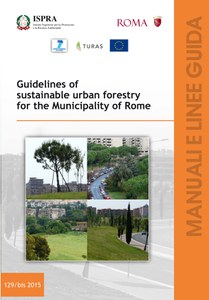Guidelines of sustainable urban forestry for the Municipality of Rome
Urban trees are a fundamental component of local environmental quality, and municipalities are increasingly aware of that. Despite the adverse conditions of urban and periurban contexts in which they vegetate, trees deliver a variety of socio-economic and environmental services. To continue benefiting urban communities, they must be managed and planned in a proper way by local administrators.
The present Guidelines of sustainable urbano forestry for the Municipality of Rome, written by ISPRA’s technical experts in collaboration with Roma Capitale, and available both in an Italian and an English version, aim to support local decision makers and their policies for urban green, through an ecosystem approach for smart planning, able to reduce regular maintenance and reduce external inputs such as water and energy. So better use indigenous species of trees when planning new areas, paying attention to eachone’s specific biological characteristics (allergenic potential, typology of root system, VOC emission, etc.), also depending on the functions to be maximized and their proximity to streets and other grey infrastuctures (schools, etc.).
If the primary goal of the forestation project is to climate change mitigation, the choice should go to new wooded areas in periruban contexts, while when noise-reduction or air pollution mitigation need to be reached, trees can be better located along streets, parking lots, in critical areas.
Pubblicazione disponibile solo in formato elettronico
Scarica la pubblicazione (pdf - 5 Mb)


